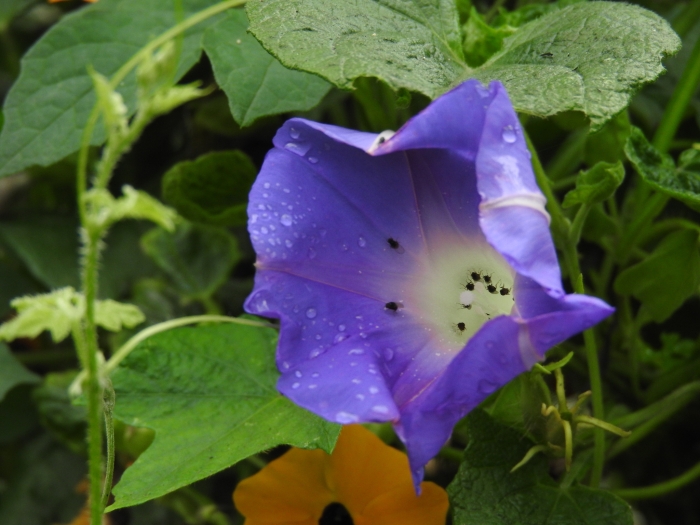Ivy Morning Glory
(Ipomoea nil)
Ivy Morning Glory (Ipomoea nil)
/
/

Victor De la Cruz
CC BY 4.0
Image By:
Victor De la Cruz
Recorded By:
Copyright:
CC BY 4.0
Copyright Notice:
Photo by: Victor De la Cruz | License Type: CC BY 4.0 | License URL: http://creativecommons.org/licenses/by/4.0/ | Rights Holder: Victor De la Cruz | Publisher: iNaturalist | Date Created: 2020-12-07T12:41:03-08:00 |

















































Estimated Native Range
Summary
Ipomoea nil, commonly known as Ivy Morning Glory, is an annual vine native to tropical and subtropical forests, savannahs, and scrublands of the Americas. It is characterized by its climbing habit with twining stems that can reach up to 5 meters in length, covered in long, hairy trichomes. The plant typically displays funnel-shaped, colorful flowers that range from blue to reddish-purple, with a whitish tube. These flowers, which can be up to five in dense cymose groups, are quite showy and open in the morning, closing by the afternoon. The wild forms of Ivy Morning Glory are generally smaller and predominantly blue, while cultivated varieties offer a wide spectrum of colors. The flowers are several centimeters wide and can appear in various shades of blue, pink, or rose, often with white stripes or edges or blends of colors.
Ivy Morning Glory is valued for its rapid growth and ability to self-seed, making it an excellent choice for covering unsightly fences or walls and for decorative use on trellises. It is cultivated for its ornamental flowers, which are particularly showy and create a vibrant display when in bloom. This plant thrives in full sun to part shade and requires medium amounts of water, preferring soils with medium drainage. While it is a popular ornamental vine, it is potentially invasive in some regions, including the United States, and care should be taken to prevent its spread outside of cultivated areas.CC BY-SA 4.0
Ivy Morning Glory is valued for its rapid growth and ability to self-seed, making it an excellent choice for covering unsightly fences or walls and for decorative use on trellises. It is cultivated for its ornamental flowers, which are particularly showy and create a vibrant display when in bloom. This plant thrives in full sun to part shade and requires medium amounts of water, preferring soils with medium drainage. While it is a popular ornamental vine, it is potentially invasive in some regions, including the United States, and care should be taken to prevent its spread outside of cultivated areas.CC BY-SA 4.0
Plant Description
- Plant Type: Vine, Herb
- Height: 6-8 feet
- Width: 0.75-1 feet
- Growth Rate: Rapid
- Flower Color: Blue, Pink, Purple, White
- Flowering Season: Summer, Fall
- Leaf Retention:
Growth Requirements
- Sun: Full Sun, Part Shade
- Water: Medium
- Drainage: Medium
Common Uses
Bee Garden, Bird Garden, Butterfly Garden, Drought Tolerant, Fragrant, Hummingbird Garden, Low Maintenance, Rock Garden, Showy Flowers
Natural Habitat
Native to tropical and subtropical forests, savannahs, and scrublands of the Americas
Other Names
Common Names: Whiteedge Morning-Glory, Japanese Morning Glory, Picotee Morning Glory, Qian Niu, Whiteedge Morningglory, 나팔꽃
Scientific Names: , Ipomoea nil, Ipomoea setosa, Pharbitis nil, Ipomoea hederacea, Ipomoea triloba, Ipomoea hederacea var. hederacea, Ipomoea longicuspis, Convolvulus tomentosus, Convolvulus nil
GBIF Accepted Name: Ipomoea nil (L.) Roth